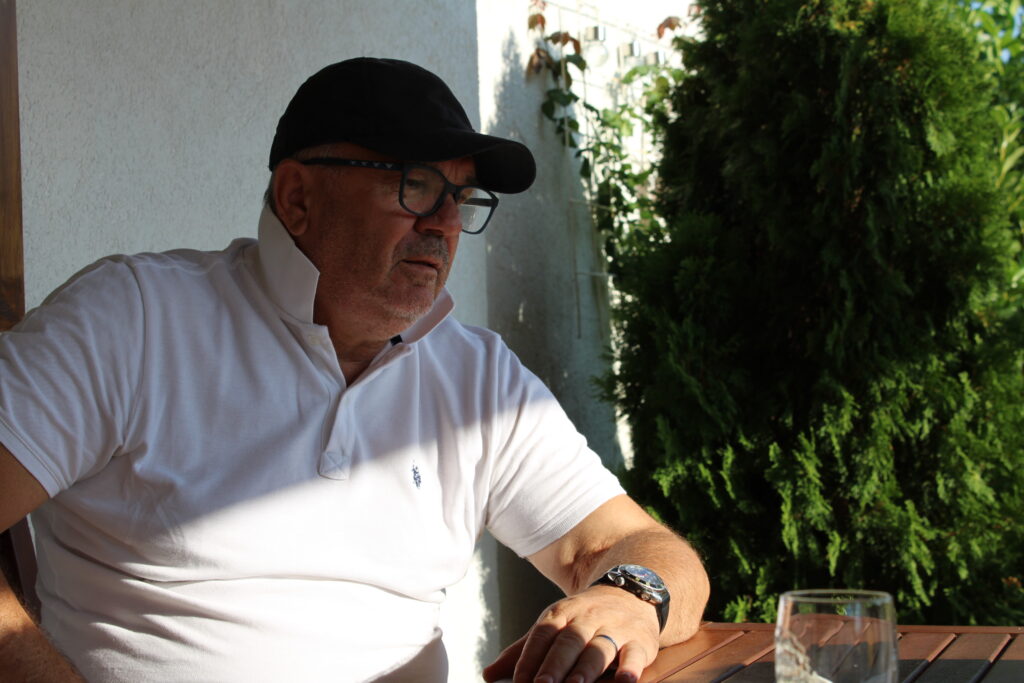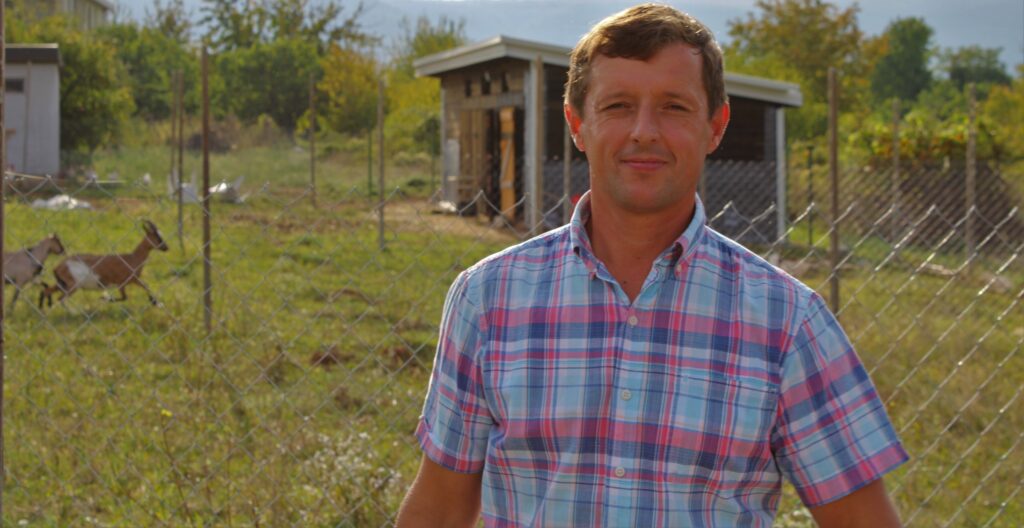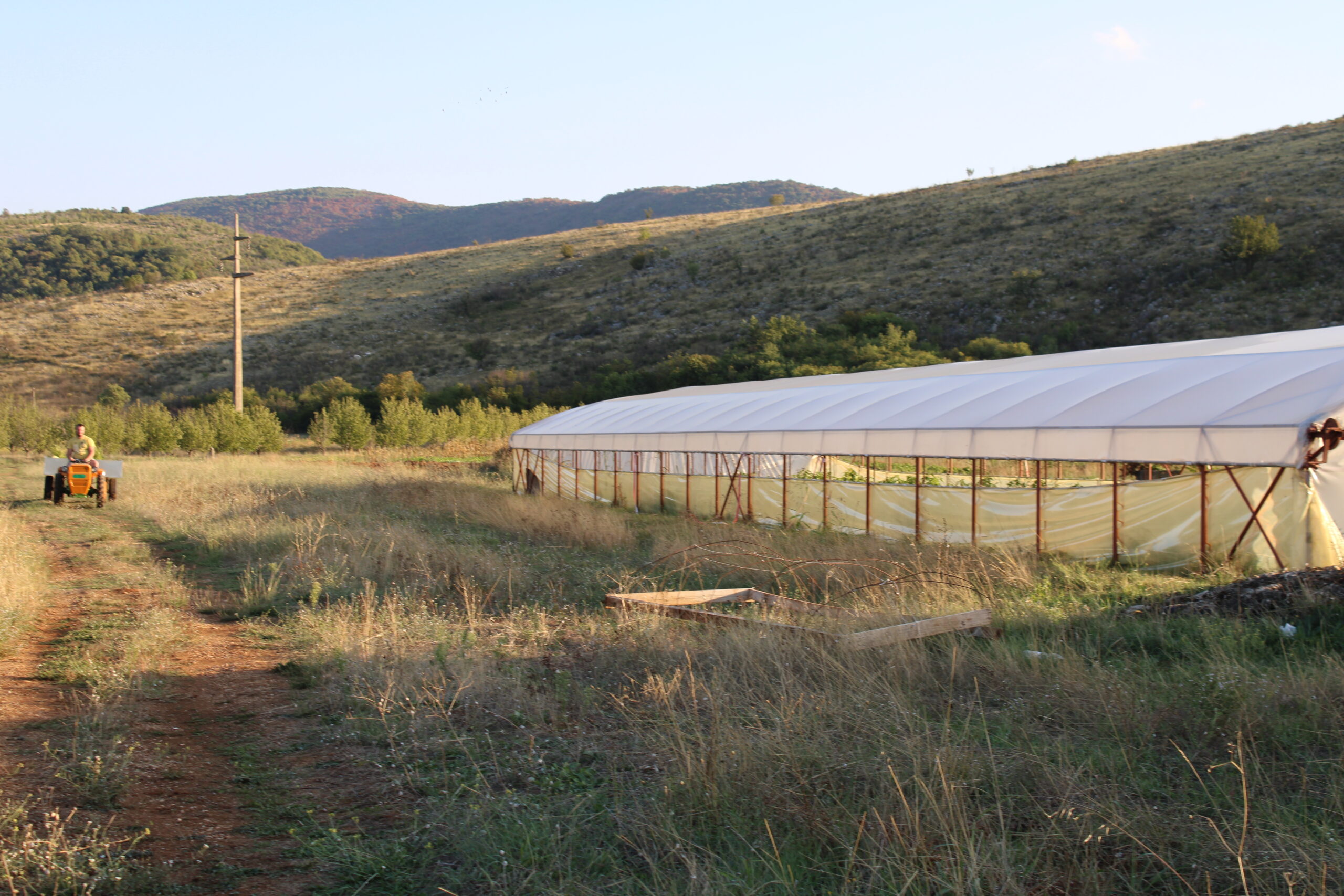Run over by a massive motorway project,
Mostar residents demand to be heard
by Rosa Hergan, Bankwatch
Mostar residents were never properly consulted about the proposed pan-European motorway that threatens their livelihoods and nature of the Neretva valley. After a recent win in a discrimination lawsuit, they’re hoping that the controversial route around Mostar might finally be consulted with them and reconsidered.
Touted as “the backbone of the country´s connectivity,” roughly half of the 700-kilometer motorway interlinking Budapest with the port city Ploce on Croatia’s Adriatic coastline cuts through the Federation of Bosnia and Herzegovina (FBiH), and jeopardizes residents’ livelihoods along its way.
In 2016, local residents from the villages Ortijes, Kosor and Malo Polje in the South of Mostar learned about the approved route alignment, which would cross through the rich agricultural fields along the river valleys. The decision was made five years after the public consultations in 2011 on two prior route designs. Of these two publicly consulted route options, residents preferred the one that ran up on the ridge.
In breach of the FBiH legislation that affords the public and affected citizens the right to participate in the final routing of the motorway, the project promotor, JP Autoceste, made changes to the sub-section Mostar South – Tunnel Kvanj in the project level spatial plan. These changes were approved by the Federation’s parliament in 2016.
The approved route runs 8.6 kilometers from the interchange of Mostar across fertile agricultural land in the villages of Kosor and Ortijes, stretching over extremely sensitive rivers, the Buna and Bunica in Malo Polje, until it reaches the tunnel Kvanj at Hodbina hill.
Bundled with a EUR 17.6 million EU grant channeled through the Western Balkan Investment Framework, the European Bank for Reconstruction and Development (EBRD) signed a loan totaling EUR 60 million for this subsection in 2019.
Serious questions about the current design’s environmental and social impacts, on top of the obscured decision-making process behind it, have sparked a series of local opposition by a group of citizens from different communities. To varying degrees these people are directly and indirectly affected by the land expropriation for the project, by planned construction activities and ultimately by the operation of the motorway.
In 2016, a citizen initiative first formulated their demands to have a seat at the table and petitioned for the changing of the alignment. 3,200 residents from Malo Polje, Kosor and Oritijes signed the petition.
Fast-forward to 2021, the public company, JP Autoceste, moved on with the expropriation of properties and homes located directly on the motorway in the South of Mostar. Despite ongoing local opposition and the submission of two complaints to the independent complaint mechanisms of the international financiers, the European Investment Bank (EIB) and the EBRD, JP Autoceste claims that the progress made on expropriation demonstrates public support for the project.
Echoing citizens’ complaints to the Banks, Bankwatch found the banks to fail several of their own standards that imbue them with the obligation to ensure protection of local people’s rights and biodiversity.
To obtain the full support from local residents for the subsection in the south of Mostar, the EBRD and its project promoter, JP Autoceste, need to conduct additional studies and an analysis of alternative routes that will do less harm and will receive “social license” from affected local people.
It starts with the basics. The environmental assessments lack sufficient baseline studies and significantly underestimate the impacts that will be caused by the construction and operation of the motorway. Apart from jeopardizing the EBRD’s rules on critical habitats, building two bridges across the rivers Buna and another one over the river Bunica could potentially damage the spawning habitat of the globally endangered soft-mouthed trout, Salmo obtusirostris.

But the issue is not unique to this motorway, and will resurface in many other projects with potential environmental impacts in the country. The use of outdated data on flora and fauna in the environmental impact assessments reflects the wider systematic failure of the government to properly document biodiversity hot-spots in the Federation’s unique Neretva River basin. In essence, many species remain undocumented and vulnerable to blind destruction in the project area.
This is why Bankwatch has launched a petition urging the EBRD, EIB, The Western Balkans Investment Framework (WBIF), and JP Autoceste to halt all activities related to the development of the Corridor Vc sections crossing the Neretva valley until additional baseline biodiversity studies on threatened species and habitats are completed and route alternatives are considered.
In a similarly unambitious manner, the project client, JP Autoceste, failed to safeguard local people against economic displacement and the potential social and economic harms caused by the land acquisition process of plots located on the route of the motorway. Livelihood restoration plans should be based on comprehensive valuation of all impacted people in the buffer zone of the project, but such assessments are missing.
Bankwatch’s report showed that that strategies and measures in the project documentation did not detail how the specific needs of vulnerable groups, including ethnic minorities and war returnees, impacted by the motorway were going to be met. Both national law and the EBRD policy require that special measures are taken to avoid discrimination and the violation of the rights of vulnerable groups.
Finally, their anguish was heard. On December 28, 2021, the Municipal Court in Mostar ruled that the Federation of Bosnia and Herzegovina’s decision to build the Corridor Vc motorway through Kosor, Malo Polje, Blagaj, Ortiješ, and Lakševine constituted covert discrimination against affected people by failing to conduct public consultations and justifying the changes to the Spatial Plan in 2017. The court verdict is significant because it is the first to legally confirm residents’ and Bankwatch’s contention.
Turning to the Bankwatch report, it found that the client’s assessment of the project also overlooked the impacts on plots inside the project’s area of influence, a buffer area of 500 m on either side of the road. According to the project’s impact assessment, this area covers a total of 1071.32 hectares that may be indirectly affected during the construction and operation phases. The census and the socioeconomic survey conducted for the project, which assess different personal situations of affected communities, narrowly focus on directly impacted persons who own land or houses located on the motorway route, but not those who own neighboring plots.
Semir Kljako owns a property about 20 meters away from the current route in Malo Polje, where the motorway crosses over the pristine Buna River. He rents his home out, mostly to foreign families visiting the rivers and the surrounding UNESCO sites in Blagaj during the summer months.
‘Besides Autoceste illegally trespassing on my property in 2019 to indicate the project impact area with wooden sticks, I had never been informed about the project’s impacts or surveyed about any potential socioeconomic impacts.’
Semir Kljako, September 2021

Fighting for the highway route to be changed, Mr. Kljako fears that if the valley route remains in place fewer tourists will choose to spend their holidays in Malo Polje. The result would potentially be losing an important source of income for his family.
Enej Peco, a Bosnian Canadian, who runs a chicken and goat farm within 500 meters from the motorway in village of Ortijes faces a similar fate. He returned in 2019 with his family to realise his dream of running an organic farm. Despite living in the close vicinity of the highway, he was not consulted for the socioeconomic survey in 2019, nor has he been approached by any of the staff of JP Autoceste since he returned.

Concerned about the impact of pollution on his agricultural production and livestock and the potential loss of income, Enej demands a “halt of the construction until the project promoter can provide us with a proper assessment of alternatives.”
In summer 2021, Bankwatch took notice of the fact that an affected property owner’s mere decision to be expropriated does not translate into support for the motorway. This comes as a surprise to JP Autoceste, who takes particular pride in referring to the high percentage of sold Serb-owned land in Ortiješ und Gnojnice Donje as a show of good faith and support for the motorway.
During meetings in June and September 2021, Vedran Adzovic, the head of an expropriated household in Malo Polje, reiterated to Bankwatch that he felt bereaved of any choice once he learned that the motorway is going to affect his house and most of his agricultural fields in Malo Polje.

“I did not sell my land. I was expropriated,” Mr. Adžović explained to Bankwatch in September 2021. Expropriation cannot be compared to a voluntary land deal, let alone a sign of support for the project. He signed the contract at the end of 2020 because his financial needs intensified his fear of losing his livelihood in the future.
Mr. Adžović is tormented by the mere thought of starting his agricultural business from scratch and building a new house for his family. Visibly distraught, he claimed to Bankwatch that other landowners allegedly benefited from the re-routing in 2016 by purchasing cheap land ahead of the changes to project level spatial plan only to resell it at a higher market price during the land acquisition.
What continues to fuel these residents’ frustration is that despite the stringent international policy guidelines and performance requirements of the banks, the international financiers chose to glance over the structural weakness of Bosnia and Herzegovina’s institutions when approving their loans in the country. A recent advocacy letter to the board of the Western Balkan Investment Framework by a group of regional civil society organizations brought forth similar concerns, calling for clear conditions on the delivery of the Economic and Investment Plan (EIP) on issues related to “corruption and conflict of interest, public procurement and rule of law.“
On the ground, the election of a new mayor and city council for Mostar in 2020, following eleven years without accountability at the local government level, initially kindled hope for higher levels of transparency and legitimate political representation of the needs of local residents.
But this was a far cry from reality.
In the beginning of April 2021, Lidija Berberović, together with her relative Slavko Berberović and Amna Popovac, visited the office of Mostar’s recently elected mayor, Mario Kodic. Lidija and Slavko belong to the family of the late activist Vujadin Berberović, who had been challenging the current routing since it was first made public. Their family-owned vineyards in Ortiješ make up the vast majority of the Serb-owned property to be expropriated. Together with other residents and the executive director of the local NGO Eko Dvogled, Amna Popovac, they co-filed the complaint to the EBRD’s independent accountability mechanism in 2020 and expect a final report in the first half of 2022.
Lidija clearly recalls the mayor’s accusations against them on April 13th in 2021: “We expected support from his side, but we did not even get understanding,” she told Bankwatch. Instead, “he openly told us that we are obstructing the motorway and that we are against the progress of this country.” In reality, all they demanded was accountability in a process that is shrouded in closed-door decision-making.
Albeit frustrating, the mayor’s offensive demeanor ties in with a common thread of responses by decision-makers in country and the banks – indifference towards the voices of those people challenging the legitimacy of the current route alignment.

